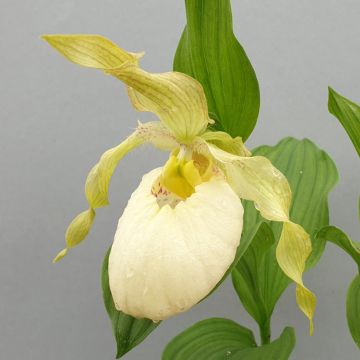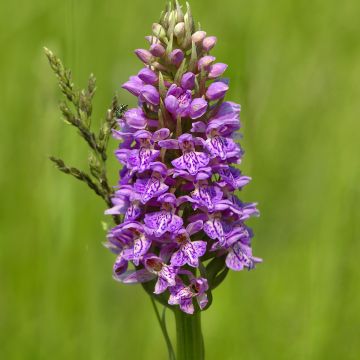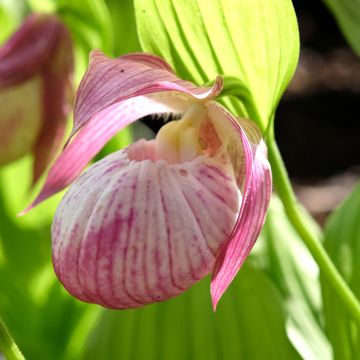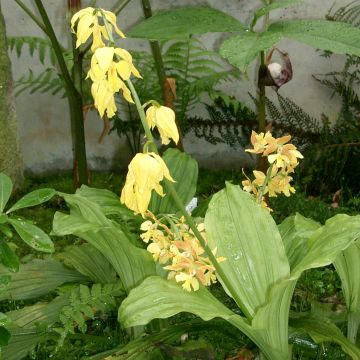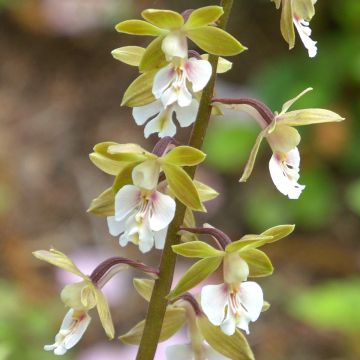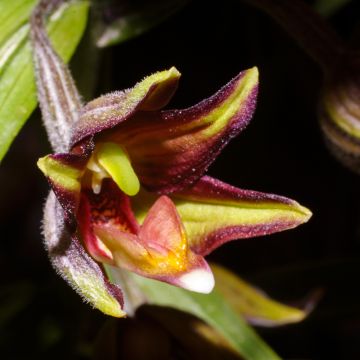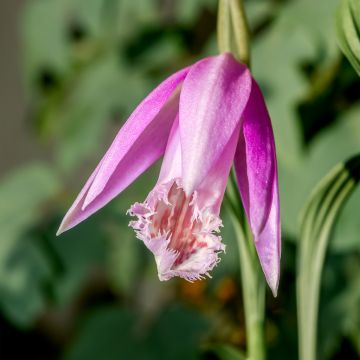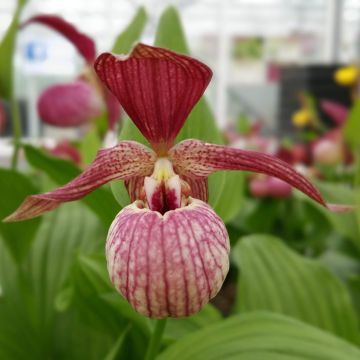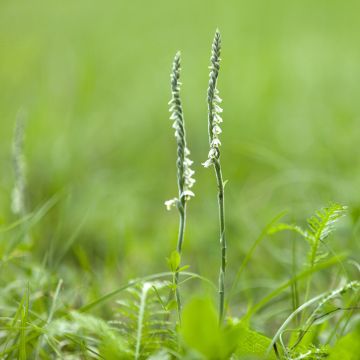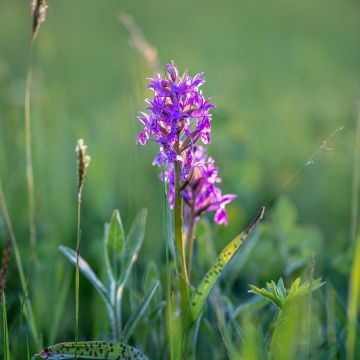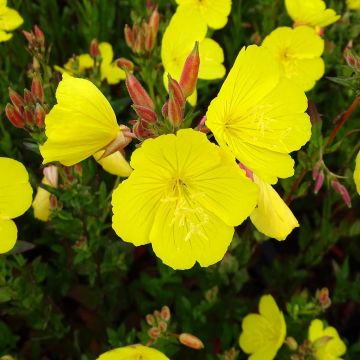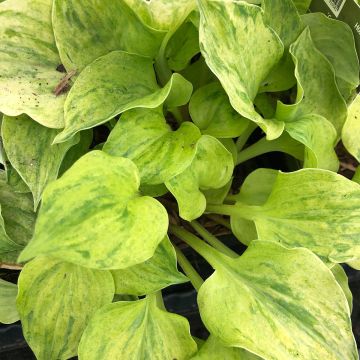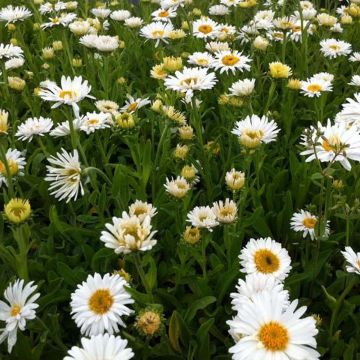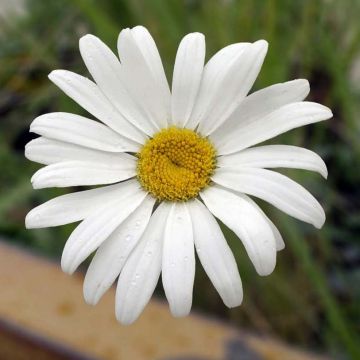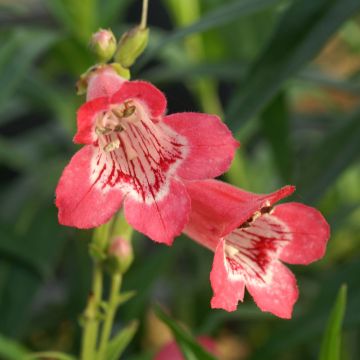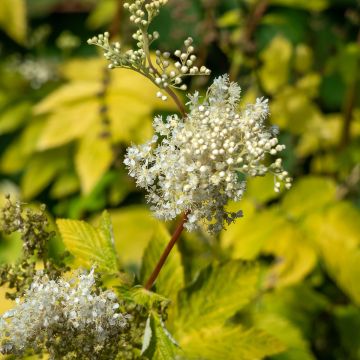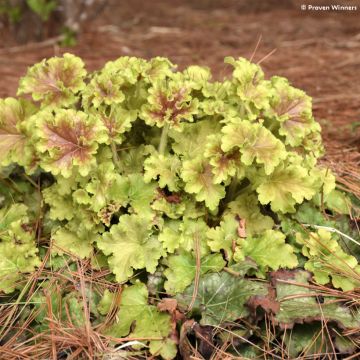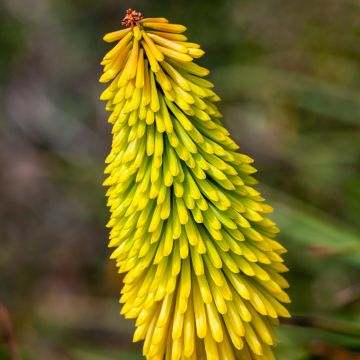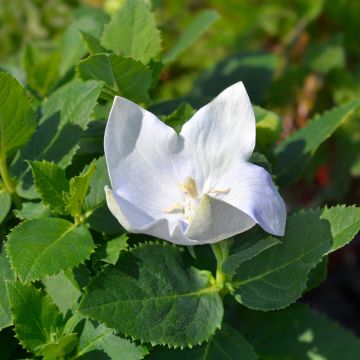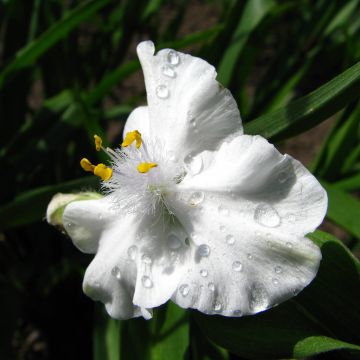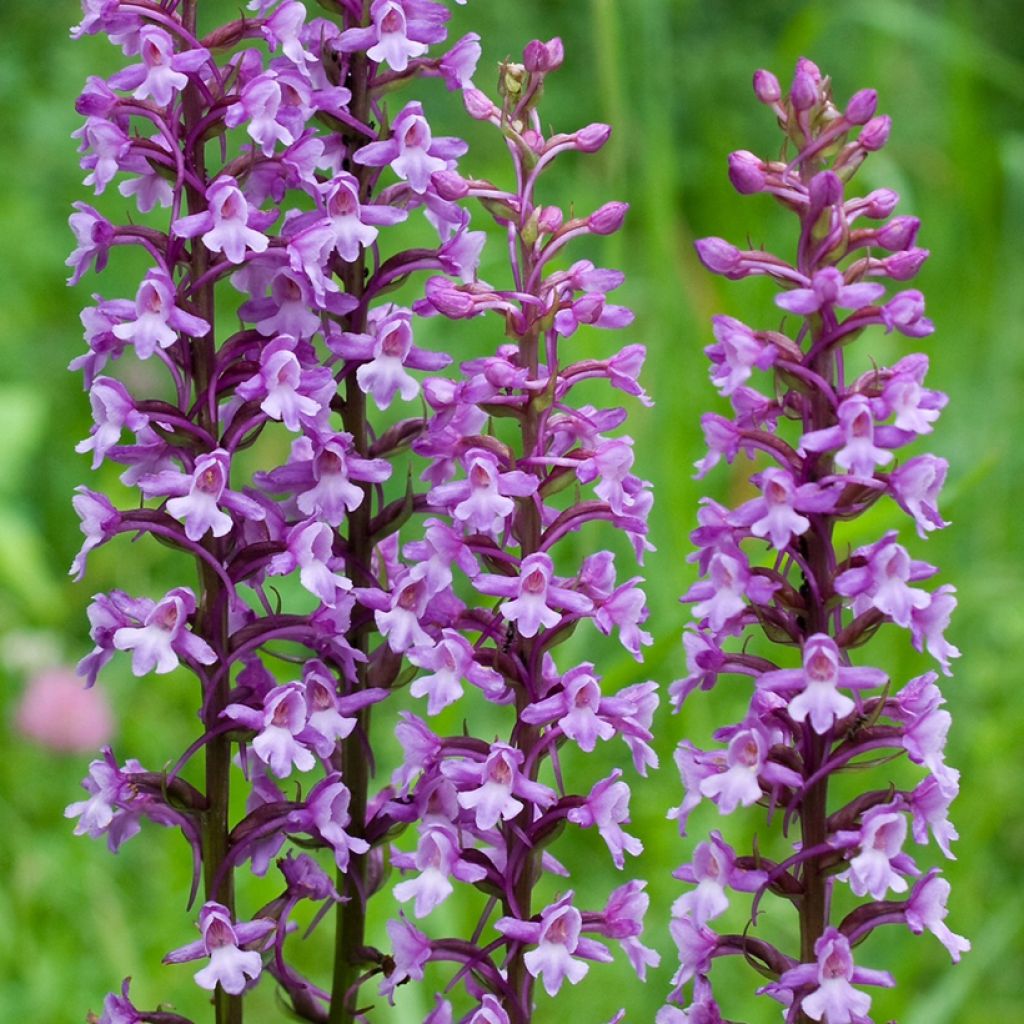

Gymnadenia conopsea
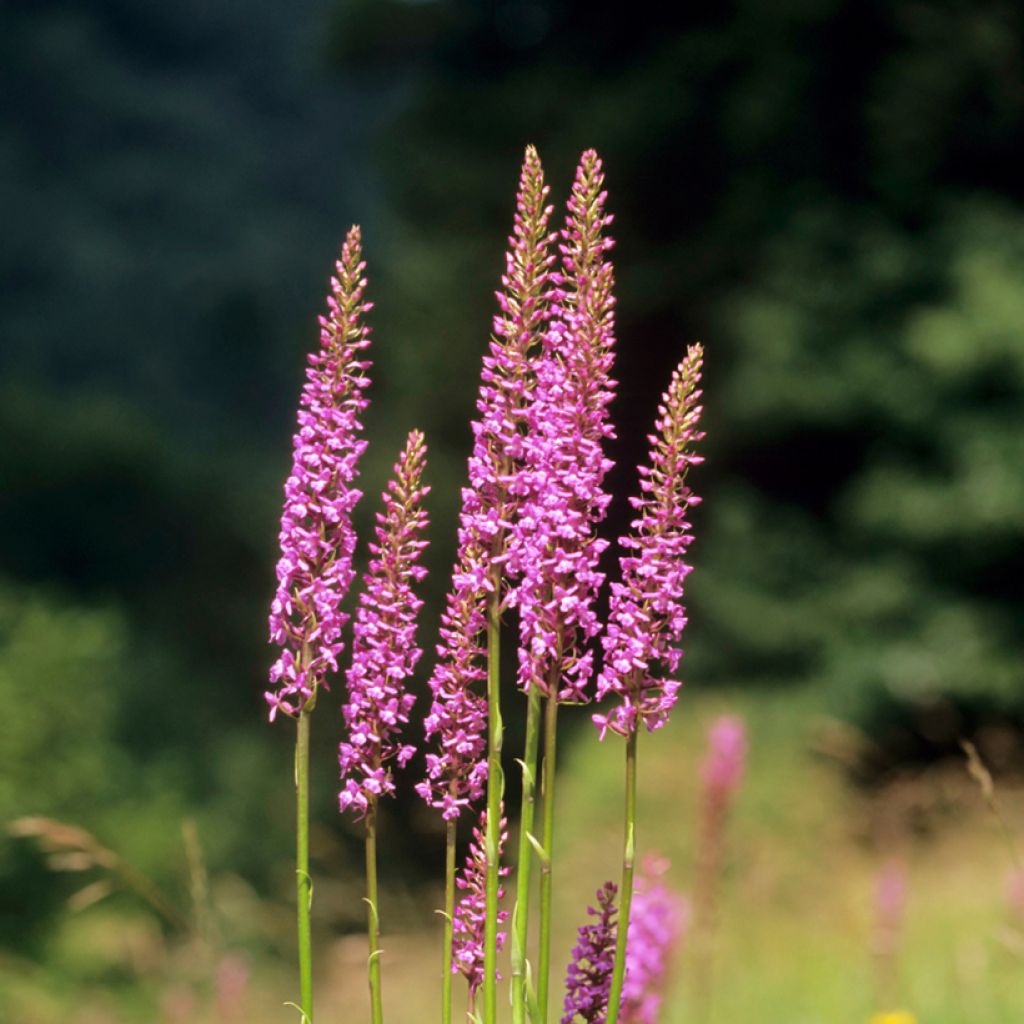

Gymnadenia conopsea
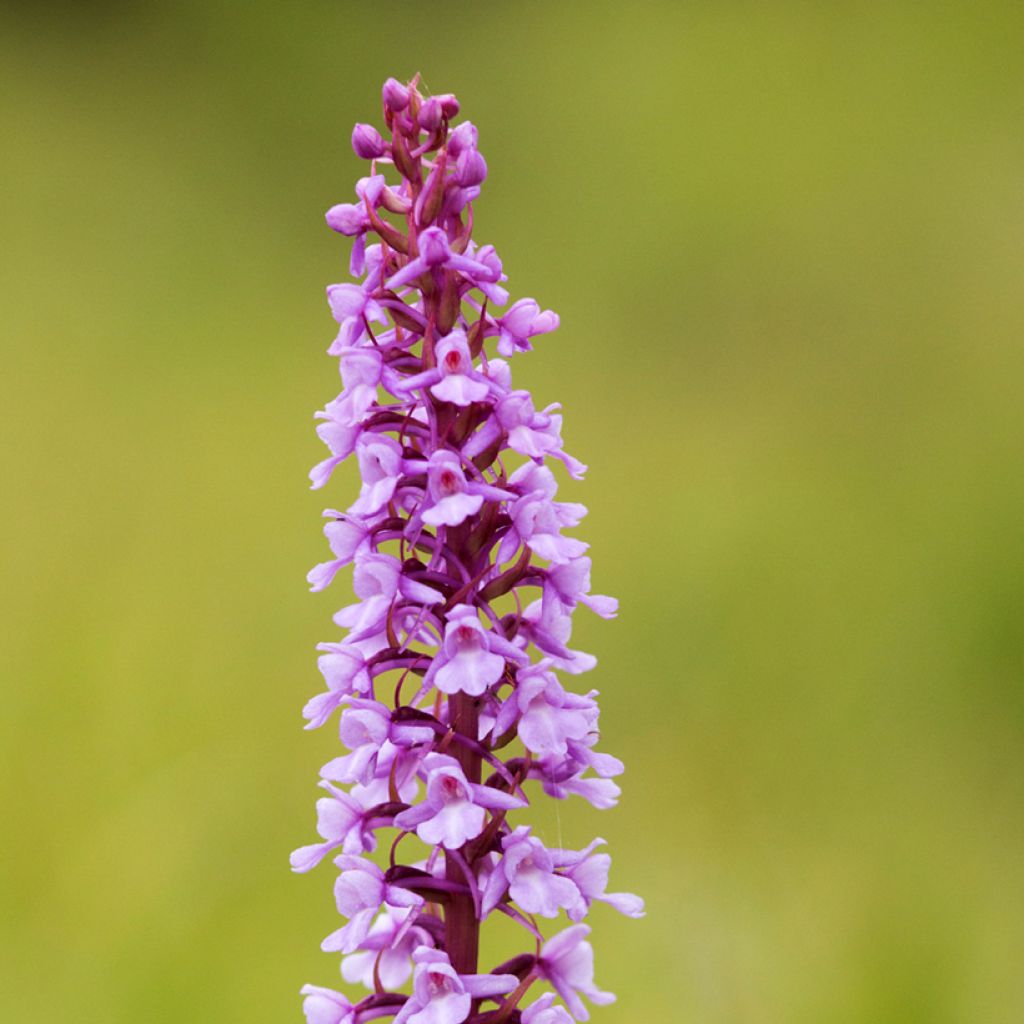

Gymnadenia conopsea
Gymnadenia conopsea
Gymnadenia conopsea
Chalk Fragrant Orchid, Marsh Fragrant Orchid
This item cannot be shipped to the selected country
Delivery charge from €5.90
More information
Schedule delivery date,
and select date in basket
This plant carries a 12 months recovery warranty
More information
We guarantee the quality of our plants for a full growing cycle, and will replace at our expense any plant that fails to recover under normal climatic and planting conditions.
From €5.90 for pickup delivery and €6.90 for home delivery
Express home delivery from €8.90.
Does this plant fit my garden?
Set up your Plantfit profile →
Description
Due to the small size of its pinkish-purple flowers, the Gymnadenia conopsea is better known as the fragrant orchid or mosquito orchid. However, they are still very decorative, as they are grouped in clusters on a spike that can reach 25 cm in length. This summer flowering is fragrant and can rival horticultural varieties, making it a perfect addition to a natural-style garden. With its exceptional hardiness, this botanical species thrives in clayey, neutral to limestone, semi-dry to moist soil.
Gymnadenia is one of the 160 species of Orchids found in the French flora, representing a tiny proportion of this vast and diverse family, which includes no less than 850 genera and 25,000 species! About twenty species represent the Gymnadenia genus. G. conopsea has an extensive distribution range, extending from Europe to Asia, from temperate to boreal and montane zones in the south. Growing from Italy to northern Norway (which explains its extreme hardiness) and from the UK to Asia, this species adapts to many habitats. It can be found on limestone grasslands, wet meadows, or even marshes, in open spaces or light woodlands, from sea level up to 2500 m altitude. This high tolerance makes it a relatively easy plant to cultivate, which is not the case for all wild Orchids. In France, it grows practically everywhere in the wild, except mainly in Brittany and the Landes, due to the acidity of the soil.
This deciduous perennial forms a small tuft of tender and homogeneous green leaves, without spots, upright and slightly arched. They are long and narrow, measuring up to 25 cm in length, and have a gutter-like shape. Depending on the region, the floral spikes appear from May to August, carried by straight and slender stems 2 to 5 mm in diameter. Measuring from 5 to 25 cm in length, they consist of 20 to 80 small pinkish-purple flowers measuring from 8 to 14 mm in diameter. The flowers are fragrant and distinguish themselves from similar species by their long spur arched downwards and backwards from the flower (towards the floral stem). The lip (lower petal) is trilobed and measures from 4 to 7 mm, while the lateral sepals are well spread on each side. The flower resembles a mosquito with open wings, hence its vernacular name... A fully bloomed plant can reach up to 60 cm in height, allowing the floral spikes to be admired from a distance. Over time, the plant will gradually spread, forming a small colony that is even more ornamental.
The Fragrant Orchid is a widespread terrestrial Orchid that has its rightful place in a wild-style garden. Plant several individuals to simulate a spontaneous population. To maintain ecological logic, Birdsfoot Trefoil (Lotus corniculatus 'Plenus'), which naturally coexists with Orchids, should be planted. This resistant undershrub produces yellow flowers from May to September, which will pleasantly contrast with the pinkish-purple of your orchid. The Yarrow 'Heinrich Vogeler' will also be a good companion, with its finely cut foliage and large umbels of small white flowers. The Quaking Grass (Briza media), this light grass, with its charming purple spikelets swaying in the wind, will complete this rural scene.
Report an error about the product description
Gymnadenia conopsea in pictures


Flowering
Foliage
Plant habit
Botanical data
Gymnadenia
conopsea
Orchidaceae
Chalk Fragrant Orchid, Marsh Fragrant Orchid
Orchis conopsea, Gymnadenia comigera, x Dactylodenia comigera, x Dactylogymnadenia comigera
Central Europe
Other Garden Orchids
Planting and care
Gymnadenia conopsea does not like to be disturbed. For this reason, it should be planted during its dormant period, in autumn or early spring, before vegetation starts. Plant it in clayey to silty, neutral to chalky, medium-dry to moist soil. It thrives in full sun but can also tolerate part shade. Exceptionally hardy, it is completely resistant to the cold and can even be planted at altitude.
Planting period
Intended location
Care
This item has not been reviewed yet - be the first to leave a review about it.
Summer flowering perennials
Haven't found what you were looking for?
Hardiness is the lowest winter temperature a plant can endure without suffering serious damage or even dying. However, hardiness is affected by location (a sheltered area, such as a patio), protection (winter cover) and soil type (hardiness is improved by well-drained soil).

Photo Sharing Terms & Conditions
In order to encourage gardeners to interact and share their experiences, Promesse de fleurs offers various media enabling content to be uploaded onto its Site - in particular via the ‘Photo sharing’ module.
The User agrees to refrain from:
- Posting any content that is illegal, prejudicial, insulting, racist, inciteful to hatred, revisionist, contrary to public decency, that infringes on privacy or on the privacy rights of third parties, in particular the publicity rights of persons and goods, intellectual property rights, or the right to privacy.
- Submitting content on behalf of a third party;
- Impersonate the identity of a third party and/or publish any personal information about a third party;
In general, the User undertakes to refrain from any unethical behaviour.
All Content (in particular text, comments, files, images, photos, videos, creative works, etc.), which may be subject to property or intellectual property rights, image or other private rights, shall remain the property of the User, subject to the limited rights granted by the terms of the licence granted by Promesse de fleurs as stated below. Users are at liberty to publish or not to publish such Content on the Site, notably via the ‘Photo Sharing’ facility, and accept that this Content shall be made public and freely accessible, notably on the Internet.
Users further acknowledge, undertake to have ,and guarantee that they hold all necessary rights and permissions to publish such material on the Site, in particular with regard to the legislation in force pertaining to any privacy, property, intellectual property, image, or contractual rights, or rights of any other nature. By publishing such Content on the Site, Users acknowledge accepting full liability as publishers of the Content within the meaning of the law, and grant Promesse de fleurs, free of charge, an inclusive, worldwide licence for the said Content for the entire duration of its publication, including all reproduction, representation, up/downloading, displaying, performing, transmission, and storage rights.
Users also grant permission for their name to be linked to the Content and accept that this link may not always be made available.
By engaging in posting material, Users consent to their Content becoming automatically accessible on the Internet, in particular on other sites and/or blogs and/or web pages of the Promesse de fleurs site, including in particular social pages and the Promesse de fleurs catalogue.
Users may secure the removal of entrusted content free of charge by issuing a simple request via our contact form.
The flowering period indicated on our website applies to countries and regions located in USDA zone 8 (France, the United Kingdom, Ireland, the Netherlands, etc.)
It will vary according to where you live:
- In zones 9 to 10 (Italy, Spain, Greece, etc.), flowering will occur about 2 to 4 weeks earlier.
- In zones 6 to 7 (Germany, Poland, Slovenia, and lower mountainous regions), flowering will be delayed by 2 to 3 weeks.
- In zone 5 (Central Europe, Scandinavia), blooming will be delayed by 3 to 5 weeks.
In temperate climates, pruning of spring-flowering shrubs (forsythia, spireas, etc.) should be done just after flowering.
Pruning of summer-flowering shrubs (Indian Lilac, Perovskia, etc.) can be done in winter or spring.
In cold regions as well as with frost-sensitive plants, avoid pruning too early when severe frosts may still occur.
The planting period indicated on our website applies to countries and regions located in USDA zone 8 (France, United Kingdom, Ireland, Netherlands).
It will vary according to where you live:
- In Mediterranean zones (Marseille, Madrid, Milan, etc.), autumn and winter are the best planting periods.
- In continental zones (Strasbourg, Munich, Vienna, etc.), delay planting by 2 to 3 weeks in spring and bring it forward by 2 to 4 weeks in autumn.
- In mountainous regions (the Alps, Pyrenees, Carpathians, etc.), it is best to plant in late spring (May-June) or late summer (August-September).
The harvesting period indicated on our website applies to countries and regions in USDA zone 8 (France, England, Ireland, the Netherlands).
In colder areas (Scandinavia, Poland, Austria...) fruit and vegetable harvests are likely to be delayed by 3-4 weeks.
In warmer areas (Italy, Spain, Greece, etc.), harvesting will probably take place earlier, depending on weather conditions.
The sowing periods indicated on our website apply to countries and regions within USDA Zone 8 (France, UK, Ireland, Netherlands).
In colder areas (Scandinavia, Poland, Austria...), delay any outdoor sowing by 3-4 weeks, or sow under glass.
In warmer climes (Italy, Spain, Greece, etc.), bring outdoor sowing forward by a few weeks.

































